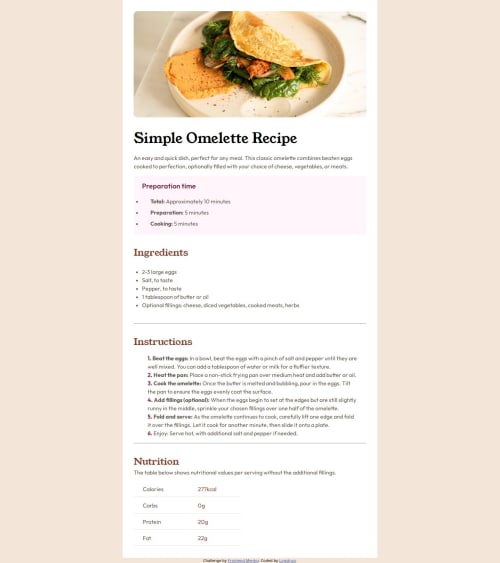Submitted about 1 year agoA solution to the Recipe page challenge
A Recipe page using only HTML and CSS
P
@logstrup78

Solution retrospective
What are you most proud of, and what would you do differently next time?
My mediaQueries works, that is good.
What challenges did you encounter, and how did you overcome them?I had som problems separating the numbers from the text in the ordered list. I tried different things, but couldn't get it to work.
What specific areas of your project would you like help with?The above!
Code
Loading...
Please log in to post a comment
Log in with GitHubCommunity feedback
No feedback yet. Be the first to give feedback on Karsten Løgstrup's solution.
Join our Discord community
Join thousands of Frontend Mentor community members taking the challenges, sharing resources, helping each other, and chatting about all things front-end!
Join our Discord